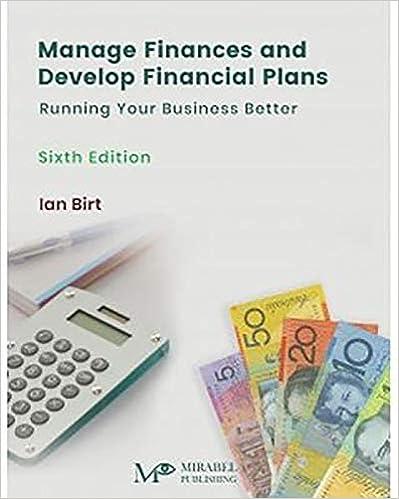Answered step by step
Verified Expert Solution
Question
1 Approved Answer
Please explain and write down in a simple way in order to understand solution, please. Let V be a portfolio consisting of twenty shares denoted

Please explain and write down in a simple way in order to understand solution, please.
Let V be a portfolio consisting of twenty shares denoted in a foreign currency. That is, if y represents the share price (in foreign currency) and x represents the exchange rate, the payoff of the portfolio is given by V = 20 y. Assume that the current share price and current exchange rate are given by Xo = yo = 1. Hence, the current value of your position is Vo = 20.1.1 = 20. a. [4 points] Use the first-order Taylor expansion to compute the value V, of the portfolio in case x changes to 2 and y changes to 0.5. Answer: avo = 20 ac av (x = 1, y = 1) = 20 ac av. 20.0 av. (r = 1, y = 1) = 20 Vo (r = 2, y = = ) av av V. (x = 1, y = 1)+1. (x = 1, y = 1)-0.5. (.x = 1, y = 1) = 20+20-10 = 30 ac b. [4 points] Use the second-order Taylor expansion to compute the value Vy of the portfolio in case x changes to 2 and y changes to 0.5. Answer: 22V =0 ac2 22V ay2 =0 a2V = 20 V. (x = 2, y = 1) = V. (x = 1, y = 1) +1. a (x = 1, y = 1) 0.5. x 72.1.1(-0.5) 32 (x = 1, y = 1) = 20+20 10 10 = 20 ar ay c. [2 points] Compute the exact value Vof the portfolio when changes to 2 and y changes to 0.5 and compare your results with the approximations you obtained in the previous questions. Answer: 1 V) (r = 2,4 = =) = = 2 20 = 20 The second order Taylor expansion coincides with the exact value change. This makes sense since the function V = r.y is a polynomial of order two. Let V be a portfolio consisting of twenty shares denoted in a foreign currency. That is, if y represents the share price (in foreign currency) and x represents the exchange rate, the payoff of the portfolio is given by V = 20 y. Assume that the current share price and current exchange rate are given by Xo = yo = 1. Hence, the current value of your position is Vo = 20.1.1 = 20. a. [4 points] Use the first-order Taylor expansion to compute the value V, of the portfolio in case x changes to 2 and y changes to 0.5. Answer: avo = 20 ac av (x = 1, y = 1) = 20 ac av. 20.0 av. (r = 1, y = 1) = 20 Vo (r = 2, y = = ) av av V. (x = 1, y = 1)+1. (x = 1, y = 1)-0.5. (.x = 1, y = 1) = 20+20-10 = 30 ac b. [4 points] Use the second-order Taylor expansion to compute the value Vy of the portfolio in case x changes to 2 and y changes to 0.5. Answer: 22V =0 ac2 22V ay2 =0 a2V = 20 V. (x = 2, y = 1) = V. (x = 1, y = 1) +1. a (x = 1, y = 1) 0.5. x 72.1.1(-0.5) 32 (x = 1, y = 1) = 20+20 10 10 = 20 ar ay c. [2 points] Compute the exact value Vof the portfolio when changes to 2 and y changes to 0.5 and compare your results with the approximations you obtained in the previous questions. Answer: 1 V) (r = 2,4 = =) = = 2 20 = 20 The second order Taylor expansion coincides with the exact value change. This makes sense since the function V = r.y is a polynomial of order twoStep by Step Solution
There are 3 Steps involved in it
Step: 1

Get Instant Access to Expert-Tailored Solutions
See step-by-step solutions with expert insights and AI powered tools for academic success
Step: 2

Step: 3

Ace Your Homework with AI
Get the answers you need in no time with our AI-driven, step-by-step assistance
Get Started


